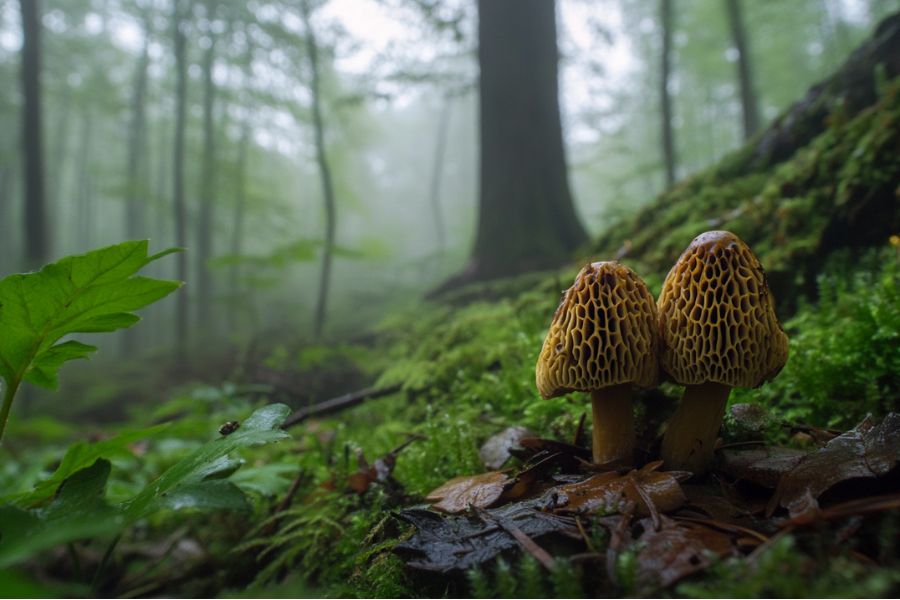Knowing the right trees is essential when hunting for morel mushrooms because these elusive fungi often form special relationships with specific tree types. Morels love to grow near certain trees, drawing nutrients from the soil and organic matter around their roots.
Being able to identify these trees can make all the difference between coming home empty-handed or with a basketful of morels. We’ll show you the most common trees that morels love to grow near and provide tips on how to identify each one.
There are often several different types of each tree with different identifying characteristics. For example, there are different types of oaks, maples, pines, and so on. We’re going to help you identify broad but defining characteristics. It’s also always a good idea to find out exactly what kinds of trees are in your area before you head out to forage.
Get ready to boost your morel hunting skills and find these tasty treasures!
What We Cover In This Article:
- What Morel Mushrooms Look Like
- Mushrooms That Look Like Morels But Aren’t
- How To Find Morels
- Where You Can Find Morels
- Additional locations to find Morels
- When You Can Find Morels
A Quick Reminder
Before we get into the specifics about where and how to find these plants and mushrooms, we want to be clear that before ingesting any wild plant or mushroom, it should be identified with 100% certainty as edible by someone qualified and experienced in mushroom and plant identification, such as a professional mycologist or an expert forager. Misidentification can lead to serious illness or death.
All plants and mushrooms have the potential to cause severe adverse reactions in certain individuals, even death. If you are consuming wild foragables, it is crucial to cook them thoroughly and properly and only eat a small portion to test for personal tolerance. Some people may have allergies or sensitivities to specific mushrooms and plants, even if they are considered safe for others.
The information provided in this article is for general informational and educational purposes only. Foraging involves inherent risks.
The Trees That Are Magnets For Morels
These are the trees you need to look out for. They might not be in every area but there is a good chance that you’ll come across at least a few of them near you.
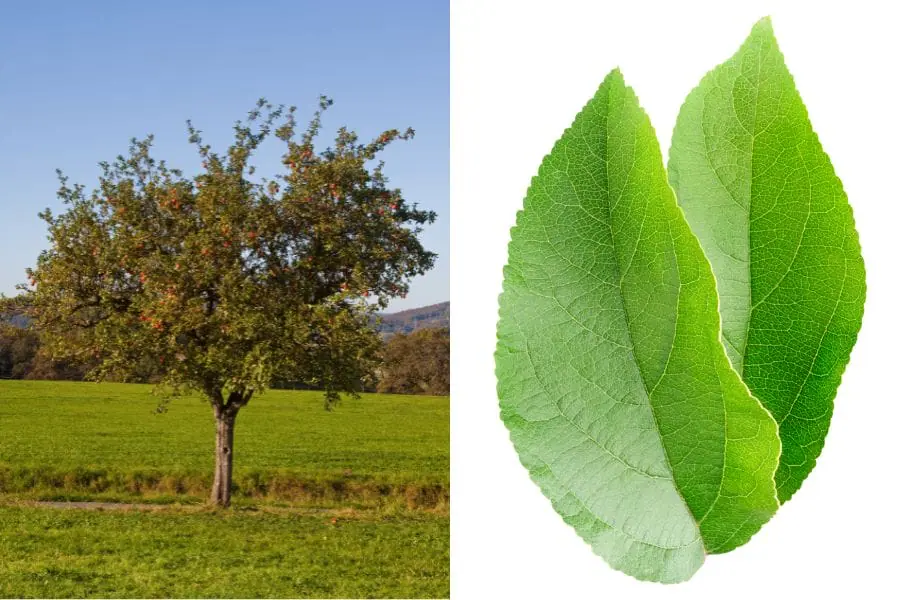
Apple
Apple trees are relatively easy to identify in the wild, especially in old orchards or along forgotten farmland. They typically have rough, dark, and furrowed bark with twisted, gnarled branches. In early spring, apple trees produce clusters of white or light pink flowers, which stand out against their sparse early foliage.
Their oval, finely serrated leaves are slightly fuzzy underneath. Even without fruit, these characteristics make apple trees recognizable. This can be especially helpful in regions where wild or abandoned apple orchards are common.
Why Morels Love Them
Decaying apple tree leaves and fallen fruit enrich the surrounding soil, creating a fertile ground that morels prefer.
Additionally, older or diseased apple trees release compounds that stimulate morel growth, especially in orchards that are no longer maintained.
However, take extra care when consuming morels found near apple trees. These mushrooms may have absorbed small amounts of pesticides or other contaminants left in the soil from past orchard treatments. Do your research before foraging in any areas that may have been previously treated with pesticides or herbicides.
Always wash thoroughly and cook morels well to reduce any potential risk.
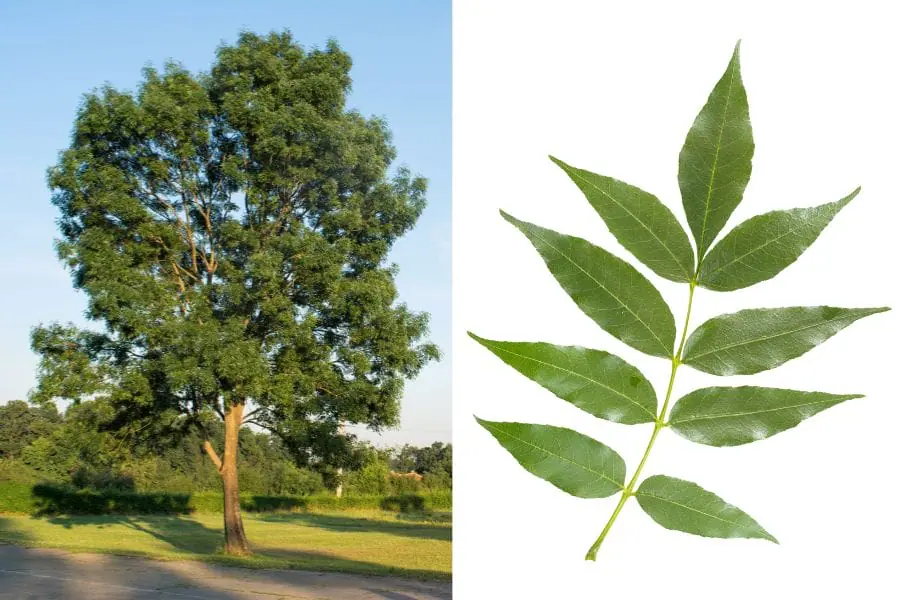
Ash
Ash trees are commonly found in hardwood forests and are known for their tall, straight trunks and pinnate compound leaves, which consist of five to nine leaflets arranged along a central stem.
The bark of an ash tree is gray and features a distinct diamond-shaped pattern, which becomes more pronounced as the tree matures. Small greenish-purple flowers bloom in spring, followed by clusters of seed pods known as samaras that hang in dense bunches and spin as they fall.
These unique features make ash trees relatively easy to identify in the wild, particularly in moist, rich soils where they often grow.
Why Morels Love Them
Morel mushrooms are commonly found near ash trees due to the specific conditions these trees create. As ash trees age and decay, they release nutrients that enrich the soil around them, providing morels with ideal growing conditions.
Morels particularly thrive in areas where ash trees have recently died or been removed, as the decomposing root systems promote fungal growth.
It’s important to keep in mind, however, that ash trees are sometimes treated to prevent emerald ash borer infestations. Thus, any mushrooms near these trees could absorb residual chemicals.
Make sure that you clean and cook these morels thoroughly to reduce any potential risks associated with soil contaminants.

Aspen
Aspen trees are easy to identify in the wild due to their smooth, white to greenish bark, which is often marked with dark horizontal scars. Their leaves are round with finely serrated edges, and the flattened stems cause the leaves to tremble or “quake” in the slightest breeze. This is a characteristic unique to aspen.
In spring and early summer, aspens produce long, dangling catkins, a type of flower that signals the tree’s readiness to pollinate.
Aspen trees usually grow in clusters, known as “clones.” Their root systems spread out underground, forming large groves of genetically identical trees.
Why Morels Love Them
Morels often grow near aspen trees because of the beneficial soil conditions these trees create. Aspens contribute to a rich, moist environment through their constant leaffall. These leaves then break down and enrich the soil, creating ideal conditions for fungi.
Additionally, aspen trees in decline or at the end of their life cycle release nutrients that morels thrive on. Thus, recently fallen or decomposing aspens are particularly attractive for foragers.

Douglas Fir
Douglas fir trees are tall, evergreen conifers commonly found in the western U.S. forests. They’re easy to identify by their thick, reddish-brown bark, which has deep furrows that become more pronounced as the tree matures.
The needles of Douglas firs are soft, flat, and radiate around the branch, with a subtle citrus-like fragrance. Their cones have distinctive three-pointed bracts that look like little “mouse tails” poking out between scales. This is a unique feature of Douglas firs.
These trees can grow to impressive heights, often reaching over 200 feet, and are typically found in cool, mountainous regions.
Why Morels Love Them
Morel mushrooms are often found near Douglas fir trees because of the specific microhabitat these trees create. As Douglas firs shed needles and branches, the decaying matter enriches the soil, making it favorable for morel growth.
Morels are especially likely to appear in areas with recently fallen or disturbed Douglas firs, such as areas affected by natural fire or logging.
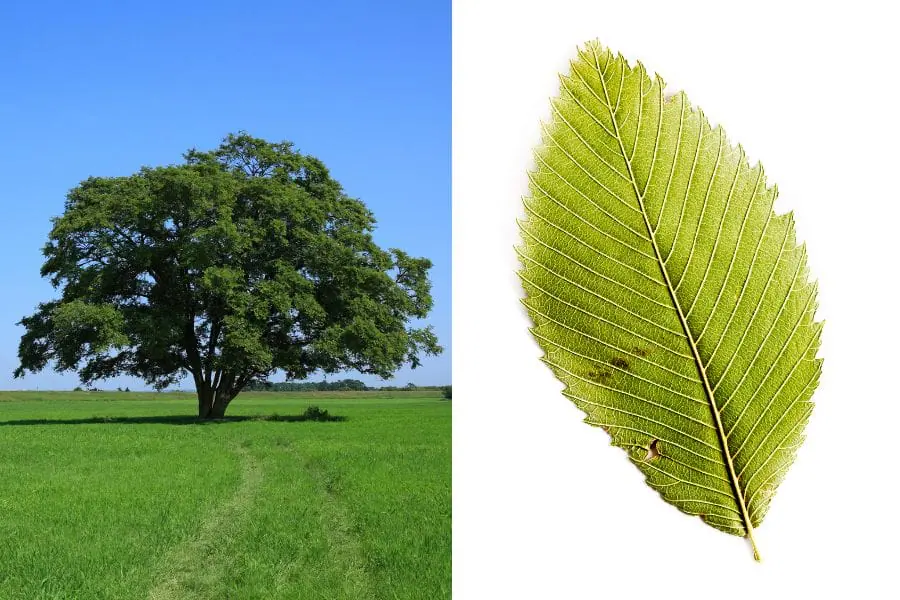
Elm
Elm trees are deciduous hardwoods commonly found along rivers, fields, and city parks in North America. In the wild, they can be identified by their rough, deeply furrowed bark and distinctive vase-like shape, which forms as the tree matures.
Elm leaves are oval with serrated edges and an asymmetrical base, and they feel slightly rough to the touch. In spring, elms produce small clusters of green flowers, followed by seeds encased in tiny, winged samaras that hang from branches.
Due to their resilience, elms thrive in a variety of soil types.
Why Morels Love Them
Morels often grow near elm trees, especially those that are diseased or dying. As elms decay, they release nutrients into the soil, which contributes to the growth of morels.
Elm trees affected by Dutch Elm Disease provide the perfect environment, as their decomposing roots promote fungal growth.
Foraging near recently fallen or decaying elms in the spring often yields good results if you’re looking for morels.
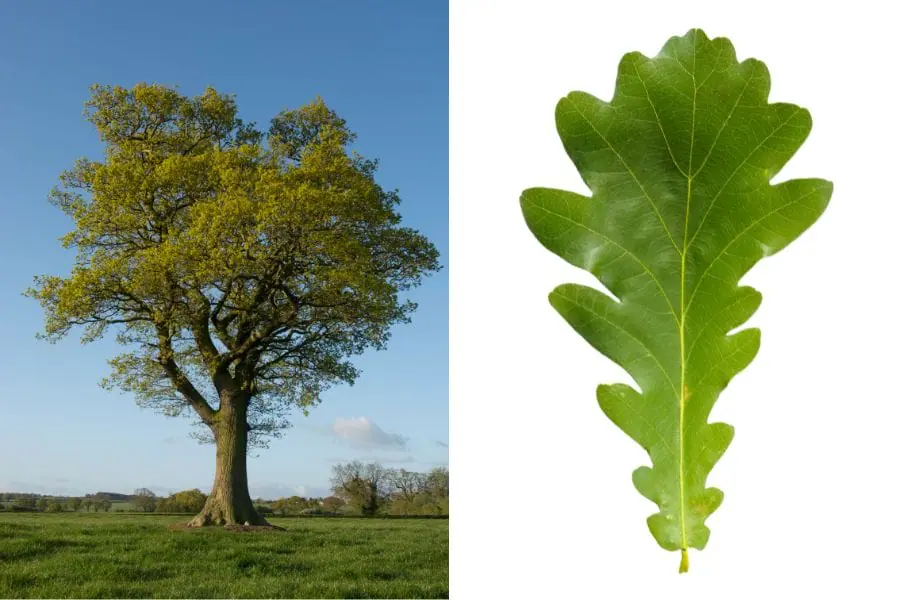
Oak
Oak trees are widely recognizable hardwoods, found in forests, parks, and fields across North America. They can be identified by their thick, deeply furrowed bark, which is usually gray or brown.
Their leaves are distinctively lobed, with some species having rounded lobes and others pointed. In autumn, oaks produce acorns, which are often scattered on the forest floor.
These trees grow large and sturdy and are an important part of many forest ecosystems, with sprawling branches that create ample shade.
Why Morels Love Them
Morel mushrooms frequently appear near oak trees, especially in moist, shaded areas under mature or decaying oaks. The organic matter from fallen leaves and acorns enriches the soil, which can stimulate the growth of morels.
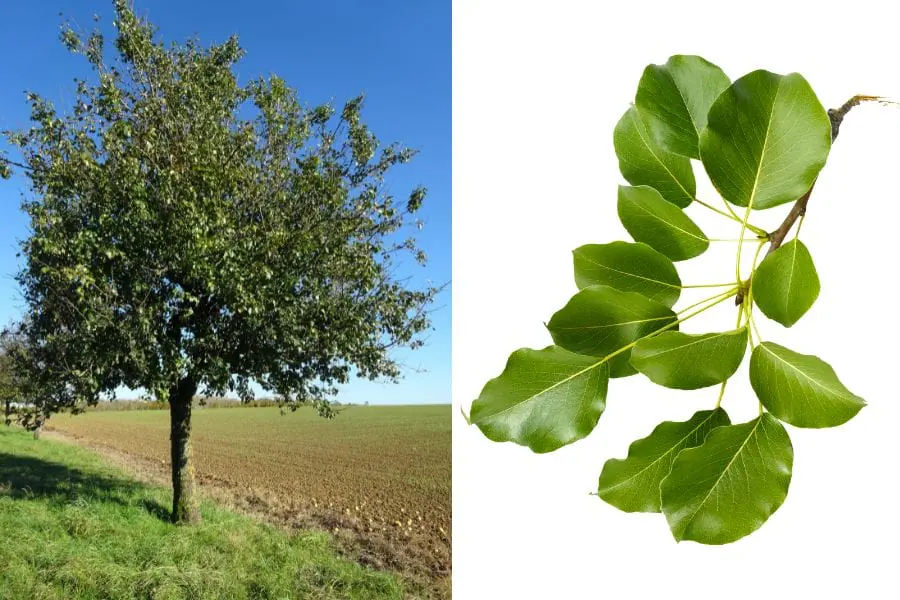
Pear
Pear trees are deciduous fruit trees that can often be found in wild orchards or near old homesteads, especially in temperate regions. In the wild, pear trees have rough, scaly bark and can grow up to 40 feet tall with a rounded, spreading canopy.
The leaves are glossy, dark green, and oval-shaped with finely serrated edges. In early spring, pear trees produce clusters of white blossoms with five petals, making them easily recognizable during this season.
In late summer to early fall, the trees bear their distinct fruit. In wild or untended trees, however, the fruits may be smaller and less uniform in shape.
Why Morels Love Them
Morels are often found near pear trees because of the nutrient-rich environment these trees create as they shed leaves and fruit. Decomposing leaves and fallen pears add organic matter to the soil, fostering morel growth.
Additionally, older or decaying pear trees release sugars and nutrients into the surrounding soil, creating ideal conditions for morels.
Like with apple trees, or any other cultivated trees, foragers should be cautious, however, as
One important thing you’ll need to keep in mind is that many old pear orchards were treated with pesticides or chemicals to protect the fruit. You’ll need to be careful if you forage in these areas, and it’s always best to look into the history of the area to see what kinds of pesticides and chemicals were used there.
To minimize risks, always wash morels thoroughly and cook them well to reduce any potential traces of contaminants from the soil.
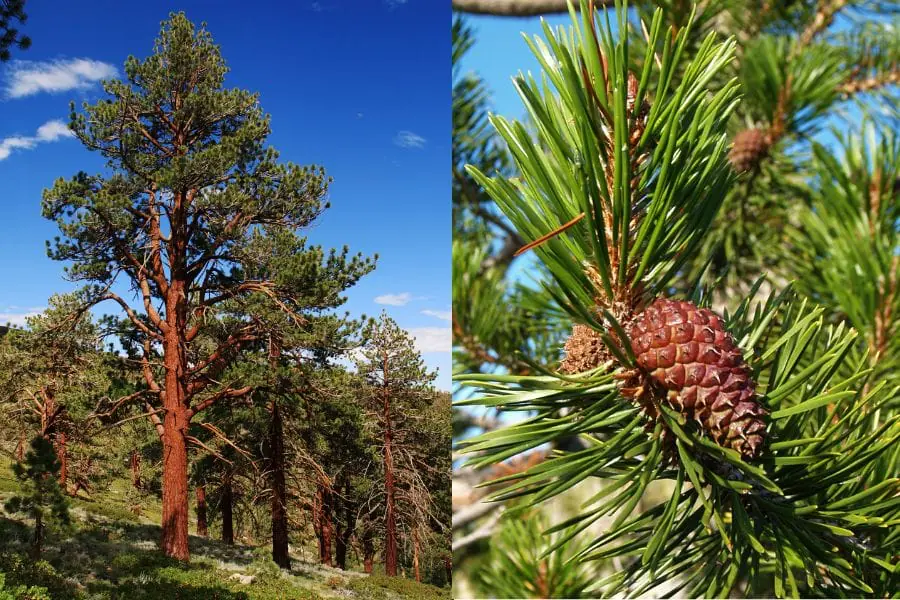
Ponderosa Pine
Ponderosa pines are tall, hardy trees commonly found in western North American forests, especially in dry, mountainous regions. These trees can reach heights of over 100 feet, with thick, orange-brown bark that has a distinctive vanilla or butterscotch scent when warm.
The bark is deeply furrowed, with large, scaly plates that give the tree a rugged look. Ponderosa pine needles are long and typically grow in clusters of three, creating a bushy appearance.
Large, oval pine cones are also characteristic of this tree, often scattered on the ground beneath it. These features make Ponderosa pines easy to identify in the wild.
Why Morels Love Them
Morels are often found near Ponderosa pines because of the unique microhabitats these trees create. As Ponderosa pines shed needles and branches, they provide organic matter that enriches the soil.
Burned Ponderosa pine forests can become prime morel hunting grounds during the net couple of morel seasons after a fire. The heat-stressed soil and decomposing wood create great conditions that can support morels.
You should focus on areas around recently fallen branches or near burned stumps for the best chances of finding these mushrooms.
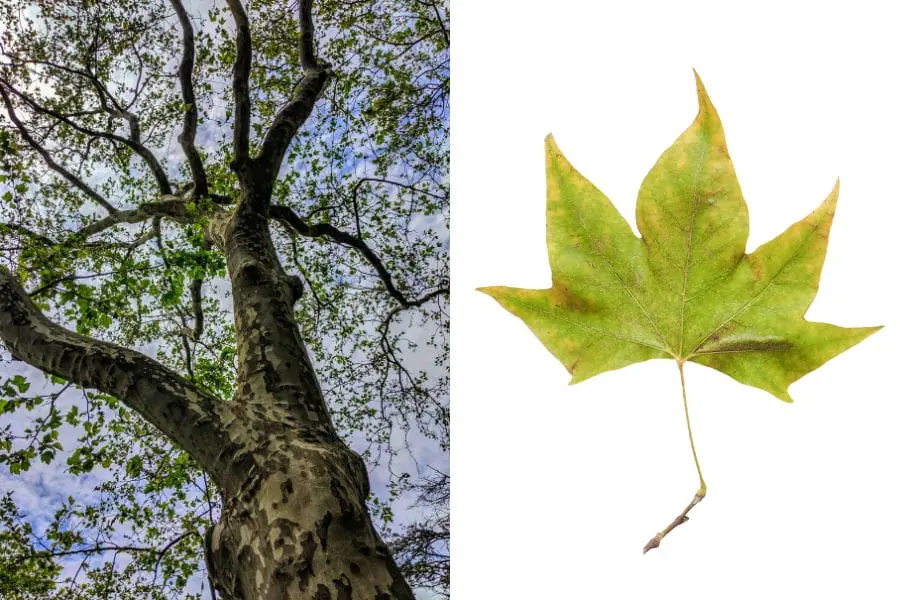
Sycamore
Sycamore trees are large, deciduous trees commonly found along rivers, creeks, and wetlands throughout North America. They’re easy to identify by their distinctive bark, which peels away in patches to reveal a mosaic of white, gray, and brown colors beneath.
Sycamore leaves are broad and lobed. They’re similar to maple leaves but larger, sometimes reaching over a foot wide.
In the spring, sycamores produce small, ball-like clusters of seeds that hang from long stems. These trees can grow up to 100 feet tall, often with a wide canopy and sturdy branches.
Why Morels Love Them
Morels often grow near sycamore trees due to the nutrient-rich environment created by the trees’ constant shedding of leaves, bark, and branches. This decaying organic matter enriches the soil, which in turn enables morel mushrooms to thrive.
Morels are also likely to grow around sycamores in floodplain areas, where moist soil accumulates around tree roots. Search in shaded, damp spots near decaying sycamore bark or along stream banks where the soil remains cool and damp.
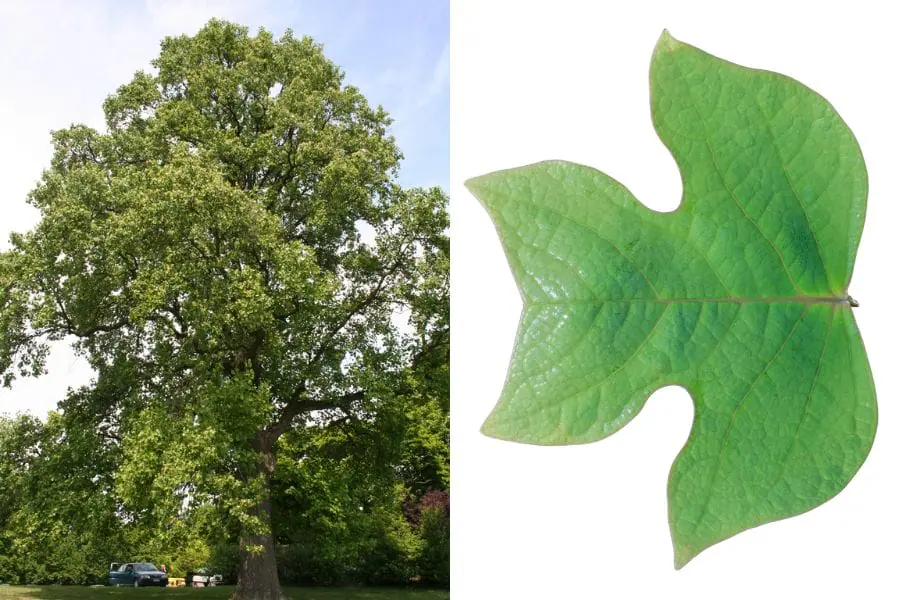
Tulip Poplar
Tulip poplar trees, also known as yellow poplars, are tall, straight trees commonly found in eastern North American forests. They can reach heights of 70 to 100 feet and are known for their unique, tulip-shaped leaves with four lobes and a smooth, slightly waxy texture.
In spring, tulip poplars produce large, greenish-yellow flowers with an orange center. They resemble tulips and thus attract many pollinators. Their bark is gray and develops deep furrows as the tree matures.
Tulip poplars grow in rich, well-drained soils, often alongside creeks or in lowland forests. They’re generally easy to spot by their size and distinct leaves.
Why Morels Love Them
Morel mushrooms are frequently found near tulip poplar trees, particularly in moist, shaded forest areas. The constant shedding of leaves and flowers enriches the soil with organic matter, providing a nutrient-dense environment for morels.
Morels are especially likely to appear near the roots of older tulip poplars. The damp soil around tulip poplars, especially after spring rains, creates the perfect microhabitat for morels to thrive.
Check the areas near fallen branches or leaf piles. You’re more likely to find morels sprouting there.

White Pine
White pine trees are tall, stately evergreens found throughout the northeastern United States and Canada. They’re recognizable by their smooth, grayish-brown bark on younger trees, which becomes rougher and more deeply furrowed with age.
White pines have soft, flexible needles that grow in bundles of five, which can help distinguish them from other pines. These trees produce long, slender cones that hang down from the branches, and they can reach heights of up to 80 feet or more.
White pines often grow in forests, hillsides, and well-drained areas.
Why Morels Love Them
Morels are occasionally found near white pine trees, especially in areas with rich, acidic soil. White pines shed needles and cones, which decay and contribute organic material to the forest floor. This creates a favorable environment for morels.
While morels are more commonly associated with hardwoods, they may appear near white pines, particularly in mixed forests where hardwoods and pines grow together.
Look around fallen branches, clusters of pine needles, or near the base of older trees where the soil stays damp. These spots can create suitable microhabitats for morels to emerge in spring.
One Final Disclaimer
The information provided in this article is for general informational and educational purposes only. Foraging for wild plants and mushrooms involves inherent risks. Some wild plants and mushrooms are toxic and can be easily mistaken for edible varieties.
Before ingesting anything, it should be identified with 100% certainty as edible by someone qualified and experienced in mushroom and plant identification, such as a professional mycologist or an expert forager. Misidentification can lead to serious illness or death.
All mushrooms and plants have the potential to cause severe adverse reactions in certain individuals, even death. If you are consuming foraged items, it is crucial to cook them thoroughly and properly and only eat a small portion to test for personal tolerance. Some people may have allergies or sensitivities to specific mushrooms and plants, even if they are considered safe for others.
Foraged items should always be fully cooked with proper instructions to ensure they are safe to eat. Many wild mushrooms and plants contain toxins and compounds that can be harmful if ingested.

